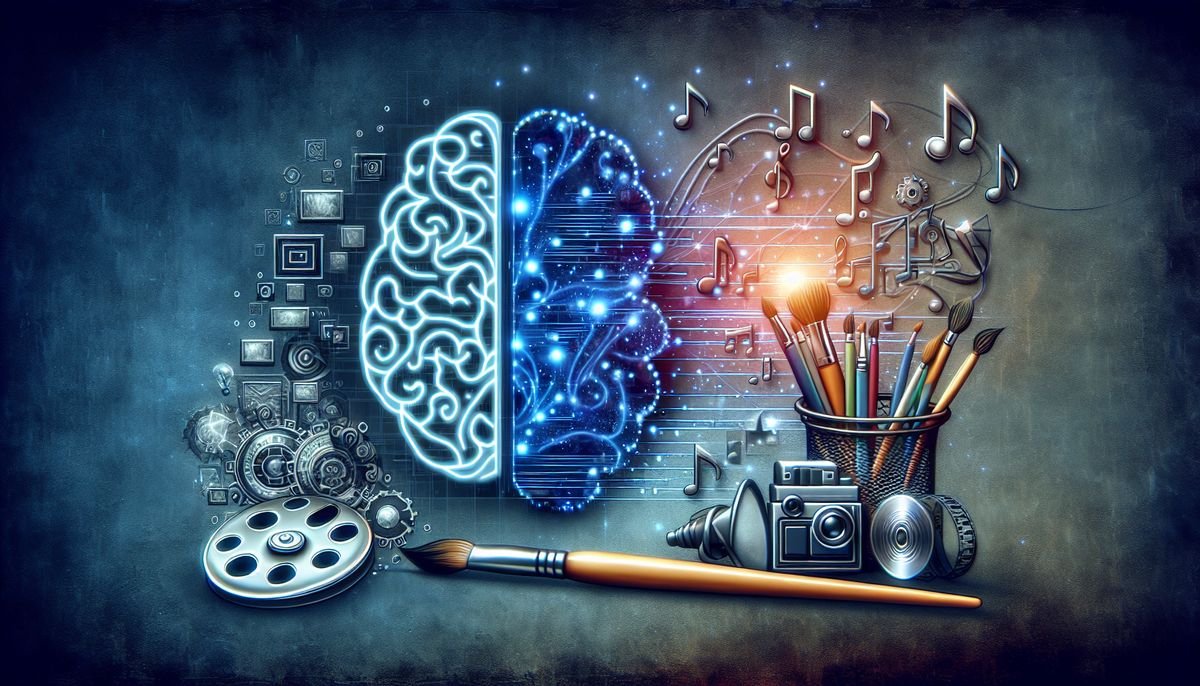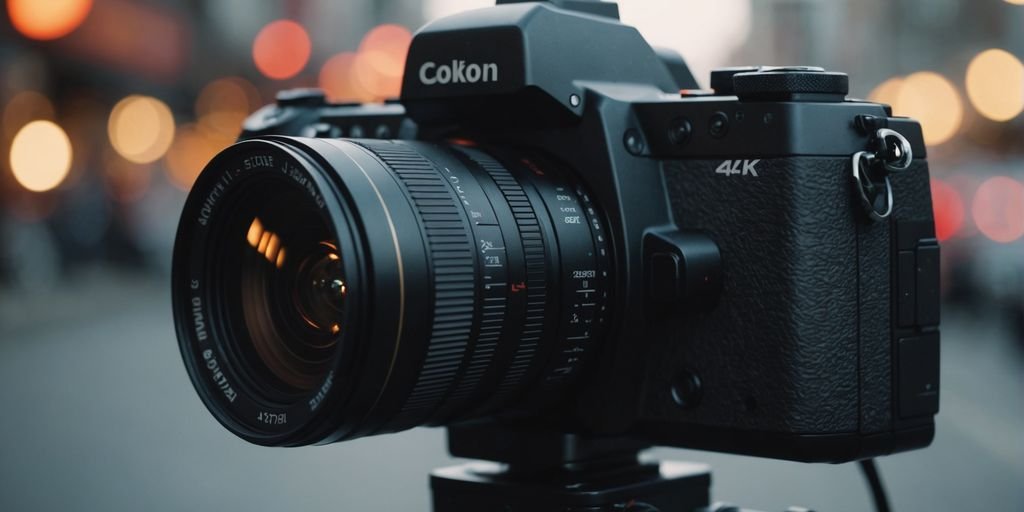The creative industries are on the brink of a transformative era with the advent of Stable Diffusion 3, a cutting-edge AI model. This technology not only enhances the creative process but also opens up a myriad of possibilities for artists, designers, and businesses alike. As we delve into the capabilities and impact of Stable Diffusion 3, we also confront the ethical and practical challenges it poses. The following article explores how this AI model is revolutionizing the creative landscape and what it means for the future of artistic creation and business innovation.
Key Takeaways
- Stable Diffusion 3 marks a significant advancement in AI-driven creativity, offering tools that can integrate seamlessly into various stages of the creative workflow.
- The model presents both opportunities and challenges, highlighting the importance of addressing ethical considerations and intellectual property rights in AI-generated art.
- Understanding and navigating the technical aspects of Stable Diffusion 3 is essential for businesses to leverage its full potential and maintain a competitive edge in the creative industry.
Stable Diffusion 3: A New Era in AI-Driven Creativity
Understanding the Mechanics of Stable Diffusion 3
Stable Diffusion 3 represents a significant leap forward in the realm of generative AI models, particularly in the creative industries. Stability AI’s announcement of Stable Diffusion 3 has sparked a wave of excitement, as it promises to enhance the capabilities of artists and creators with its advanced text-to-image generation. This model operates by interpreting written prompts and translating them into detailed images, a process that has been refined since the previous iterations.
One of the key advancements in Stable Diffusion 3 is its improved scalability and quality options. Users can now tailor the output to meet specific needs, whether that’s high-resolution images for professional projects or smaller, more efficient creations for rapid prototyping. The model’s flexibility is a testament to Stability AI’s commitment to democratizing access to cutting-edge technology.
The integration of diffusion models into creative workflows has transformed the landscape of digital art, offering a novel approach that diverges from traditional neural networks.
To fully leverage the potential of Stable Diffusion 3, it’s essential to understand its underlying mechanics. Here’s a brief overview of the steps involved in generating art with this model:
- Input a descriptive text prompt
- The model diffuses noise through the data
- Iterative refinement of the image
- Output of the final art piece
As we continue to explore the possibilities of AI in creative expression, Stable Diffusion 3 stands as a beacon of innovation, reshaping how we conceive and produce art.
Case Studies: Success Stories in Diverse Creative Fields
The advent of Stable Diffusion 3 has marked a new benchmark in AI image generation, with its ability to produce high-quality images and adapt in real-time to user prompts. This technology is not just a tool; it’s a transformative force in the creative industries. One notable success story is that of AI artist Sleepysleephead, who has seamlessly integrated AI into their creative process, using Stable Diffusion as intuitively as traditional software like Photoshop. The artist’s prolific output of around 200 pieces highlights the efficiency and creative freedom afforded by AI.
In the business realm, AI’s role as a creative co-pilot is becoming increasingly evident. The AI creative workflow, from ideation to final design, is revolutionizing how concepts are brought to life. For instance, Sachin Kamath’s development of the consistent character GPT showcases the potential of AI in generating innovative designs. This workflow typically follows a sequence:
- Ideation
- Draft
- Image generation
- Video generation
The technology is poised to unlock unique creative gadgetry and avenues for artists and businesses alike.
As we continue to witness the integration of Stable Diffusion 3 into various creative workflows, it’s clear that the model is setting a new standard for what’s possible in art and design.
Integrating Stable Diffusion 3 into Your Business Workflow
In the rapidly evolving landscape of AI-driven creativity, Stable Diffusion 3 stands out as a pivotal tool for businesses aiming to enhance their creative processes. The integration of this advanced model into business workflows has been a trending topic, particularly with the rise of platforms like Appy Pie Connect, which facilitates the seamless combination of applications such as APE Mobile and Stable Diffusion.
One of the key advantages of integrating Stable Diffusion 3 is the ability to automate and streamline content creation. This not only saves time but also allows for the scaling of creative output without compromising quality. For instance, marketing teams can generate a multitude of customized visuals for campaigns, while product designers can rapidly prototype new concepts.
The integration process itself can be broken down into a few manageable steps, ensuring a smooth transition and minimal disruption to existing operations.
To illustrate the practicality of this integration, consider the following steps:
- Identify the creative tasks within your business that can be enhanced by AI.
- Select the appropriate Stable Diffusion 3 model tailored to your specific needs.
- Utilize platforms like Appy Pie Connect to integrate Stable Diffusion 3 with your existing tools and systems.
- Train your team on the functionalities and best practices of using Stable Diffusion 3.
- Monitor and evaluate the impact of AI integration on your creative workflow, making adjustments as necessary.
Navigating the Ethical and Practical Challenges of AI Art Generation
Balancing Innovation with Intellectual Property Rights
The intersection of artificial intelligence and creative expression has ushered in a new era of possibilities, but it also raises significant questions about intellectual property rights. As AI models like Stable Diffusion 3 become more adept at generating art, the lines between human creativity and machine output are blurring, leading to complex legal and ethical considerations.
One of the most pressing issues is the ownership of AI-generated content. With recent advancements, such as the integration of Claude-3 by Anthropic into Amazon’s Bedrock, the creative industries are witnessing a shift in how content is produced and who holds the rights to it. The whistleblower case at Microsoft regarding the Co-pilot designer tool further highlights the need for clear guidelines on the use of AI in creative workflows.
The challenge lies in fostering an environment where innovation thrives while ensuring that creators’ rights are protected and respected.
To navigate this landscape, stakeholders are considering a range of solutions, including:
- Developing new legal frameworks to address AI-generated content.
- Establishing industry standards for the ethical use of AI in art.
- Creating transparent systems for attributing and licensing AI-created works.
Ensuring Ethical Use of AI in Artistic Creation
The integration of AI like Stable Diffusion 3 into the realm of art has been met with both excitement and ethical scrutiny. Ensuring the ethical use of AI in artistic creation is paramount, as it involves navigating the complex terrain of copyright laws and moral considerations. Recent discussions have centered on the responsible generation and use of AI art, emphasizing the need for creators to be mindful of the sources and data their AI models are trained on.
One of the most pressing concerns is the use of copyrighted material without permission. To address this, some have proposed the following steps:
- Establishing clear guidelines for the use of copyrighted data
- Seeking explicit consent from original creators
- Implementing attribution systems to credit source materials
- Encouraging transparency in the AI model’s training process
The podcast does an excellent job in exploring AI’s ethical implications, ensuring that listeners are not only informed about cutting-edge technologies but also about the responsibilities that come with them. Each episode, Isar and his expert guests delve into practical solutions, turning AI’s intricacies into actionable insights that listeners can readily apply to their professional lives.
The conversation around ethical AI use in art is ongoing, with many in the industry advocating for a balance between innovation and respect for intellectual property. As AI continues to evolve, so too must our approaches to its application in creative fields.
Overcoming Technical Hurdles and User Accessibility
As the adoption of AI in creative industries accelerates, ensuring user accessibility has become a pivotal challenge. Recent trends indicate a significant focus on enhancing digital accessibility, particularly for individuals with visual impairments. However, there is a critical gap in addressing other types of disabilities, such as speech and auditory challenges.
One of the key developments in the past three months has been the introduction of advanced multimodal language models like Apple’s MM1. These models are designed to interpret and generate information across different forms of media, potentially improving accessibility for a wider range of users. For instance, they can convert text to speech or interpret visual data, which can be transformative for users with specific impairments.
To further improve accessibility, businesses are encouraged to adopt a structured approach:
- Continuous testing and evaluation of AI applications to ensure they meet diverse user needs.
- Implementing user feedback mechanisms to identify and address accessibility issues.
- Collaborating with experts in digital accessibility to integrate best practices into AI-driven platforms.
By proactively addressing these challenges, companies can not only comply with legal standards but also expand their market reach to include users who might otherwise be excluded.
Conclusion
As we have explored throughout this article, Stable Diffusion represents a significant leap forward in the realm of creative AI, offering unprecedented capabilities to artists, designers, and businesses alike. This revolutionary AI model not only enhances the creative process but also democratizes artistic expression by making advanced tools accessible to a broader audience. The implications for the creative industries are profound, as Stable Diffusion ushers in a new era of innovation and collaboration. As technology continues to evolve, it is imperative for professionals to stay abreast of these advancements and consider how they can integrate such powerful tools into their workflows to remain competitive and foster creativity. The future of creative AI is bright, and Stable Diffusion is at the forefront of this transformative journey.
Frequently Asked Questions
What is Stable Diffusion 3 and how does it differ from previous versions?
Stable Diffusion 3 is the latest iteration of the AI-driven model designed for generating digital art and creative content. It builds upon its predecessors by offering improved efficiency, higher-quality outputs, and more advanced control over the generation process, allowing for more refined and detailed creations.
How can businesses integrate Stable Diffusion 3 into their creative workflows?
Businesses can leverage Stable Diffusion 3 by incorporating it into various stages of the creative process, from brainstorming and conceptualizing to drafting and final content creation. It can serve as a tool for rapid prototyping, personalized content generation, and enhancing the creative capabilities of design teams.
What are the ethical considerations when using AI like Stable Diffusion 3 for art generation?
The ethical considerations include ensuring the respect of intellectual property rights, avoiding the creation of misleading or harmful content, and being transparent about the use of AI in the creative process. It’s also important to consider the impact on traditional artists and the art industry as a whole.



